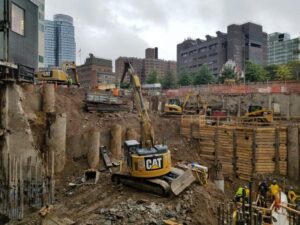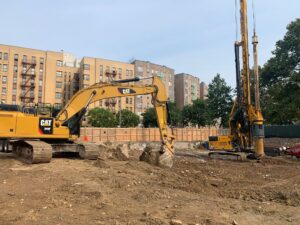

Remediation work involves cleaning or removing contaminants from a site for future work or to keep current operations safe. Remediation work involves a variety of tasks, such as the removal of contaminated soil, safe stockpiling and transportation of contaminated soil, and project-specific appropriate measures taken to ensure future operations can be completed safely once the contaminated soil has been removed.
Facility approval letters are documents issued by a regulatory agency that grant permission for a facility or project to proceed. These letters typically outline the terms and conditions under which the facility or project is allowed to operate, and may include requirements for monitoring, reporting, and compliance with applicable regulations. Linde-Griffith is capable of assisting in this process and ensures our operations abide by such regulations and local, state, or federal requirements.
Waste characterization reports are issued by regulatory agencies to determine the appropriate methods for handling and disposing of site-related waste. They can be used to develop waste management plans, select appropriate disposal methods, and ensure that the waste is properly managed throughout the project span. Waste characterization reports typically include information about the physical and chemical properties of the waste, as well as any potential hazards or risks associated with the waste.
Mass excavation is the process of removing large volumes of soil or rock from a site in order to prepare a site for future projects such as land development, infrastructure construction, and foundation installation. Linde-Griffith’s fleet of heavy machinery allows Linde-Griffith to excavate large amounts of soil and properly transport the soil to approved facilities.
Rock chipping, breaking, and blasting are methods that are used to break or remove rock or other hard materials. These methods are commonly used in construction, mining, and industries where it is necessary to remove or break up large amounts of rock.
Rock chipping involves using a tool, such as a chisel or hammer, to chip or break small pieces of rock from a larger boulder or outcropping. This method is often used to remove small amounts of rock or to create rough surfaces.
Rock breaking involves using mechanical force to break larger pieces of rock into smaller pieces. This can be done using hydraulic equipment, such as hydraulic hammers or rock breakers, or with explosives.
Blasting is a method that involves the use of explosives to break or remove rock. It is often used in mining and construction to remove large amounts of rock or to create channels or tunnels. Blasting is a highly specialized field and requires careful planning and execution to ensure the safety of workers and the surrounding region.
Mechanical, electrical, and plumbing (MEP) trenching is the process of digging trenches to install MEP systems in a building or other structure. MEP systems are essential for the operation of buildings and other structures, as they provide heating, ventilation, air conditioning, electrical power, lighting, and plumbing services. Trenching is often necessary to install these systems because it allows for the organized and efficient installation of pipes, cables, and other equipment needed for the MEP systems to function properly.